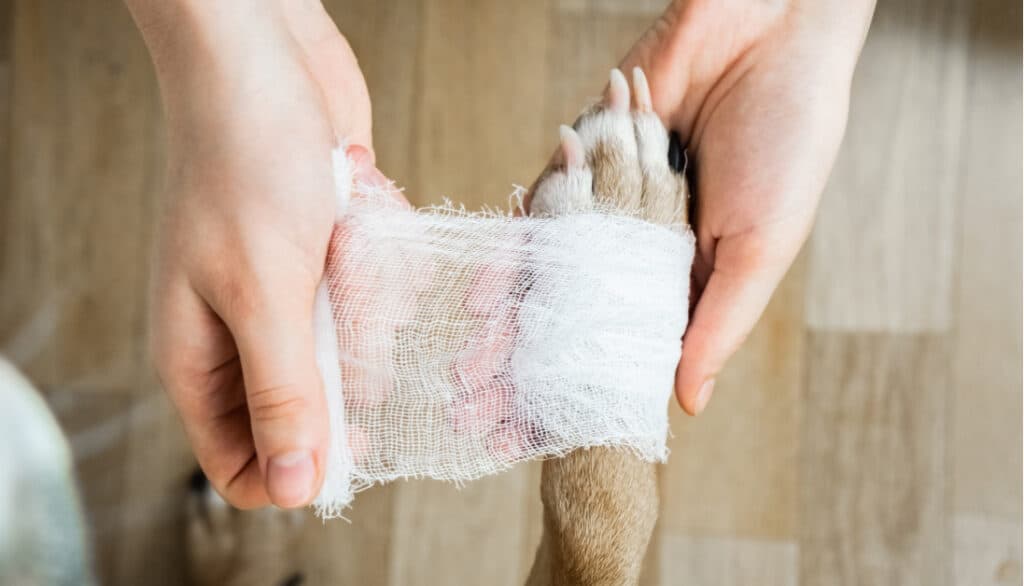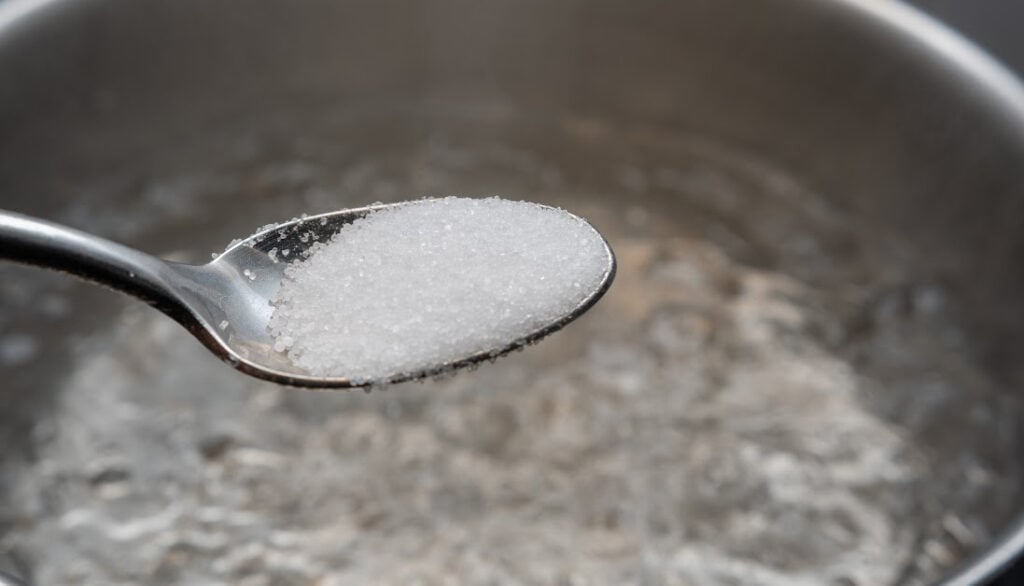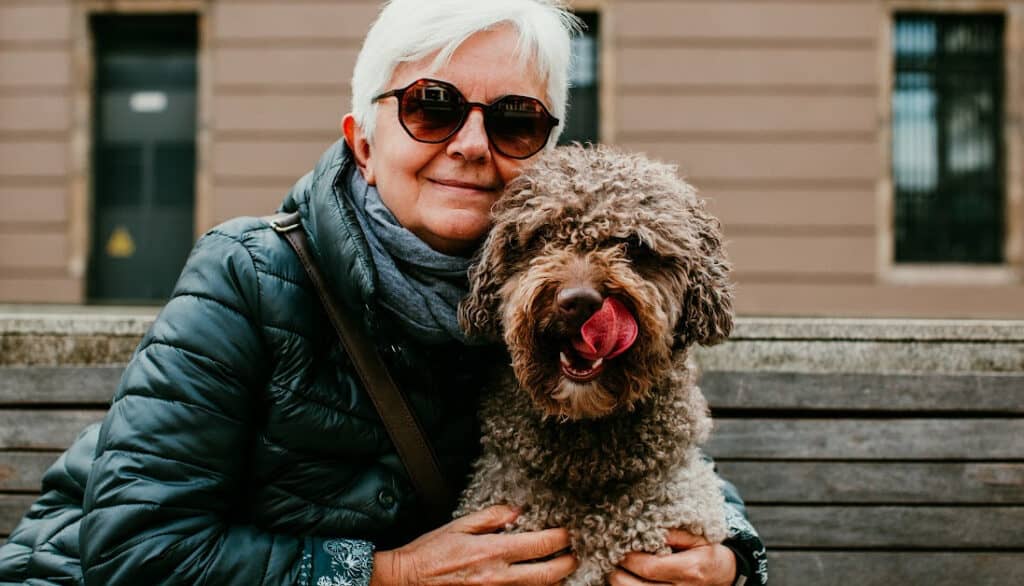Hello, I’m Dr. Candy Akers, and I’ve dedicated my life to understanding and promoting the well-being of our beloved pets. Over the years, I’ve encountered countless pet owners who are deeply committed to the health and happiness of their furry companions. One common concern that many face is how to effectively treat and care for wounds that our adventurous pets might sustain. While there are numerous treatments available, there’s a natural remedy that has stood the test of time: salt water. In this blog, I’ll delve into the science and practicality of using salt water as a wound-cleaning agent for dogs.
Drawing from research, personal experiences, and age-old wisdom, I aim to provide a comprehensive guide on this topic. Let’s explore together the benefits, preparation methods, and best practices for using salt water to aid in your dog’s healing process.

Why Salt Water for Dog Wounds?
Salt water, often referred to as saline solution, has been used for centuries as a natural remedy for wound care, not just for humans but also for animals, including dogs. Let’s delve into the reasons why salt water is considered beneficial for treating dog wounds:
- Natural Antiseptic Properties: Salt water acts as a disinfectant, helping to clean out wounds and prevent the growth of harmful bacteria. When applied to wounds, the saline solution can draw out moisture, creating an environment that’s less conducive for bacteria to thrive.
- Promotes Healing: The osmotic effect of salt helps to reduce the moisture in the wound, which can speed up the healing process. By removing excess fluids and debris, salt water can help tissues regenerate more effectively.
- Reduces Inflammation: Salt water can help reduce swelling and inflammation around the wound. This not only aids in the healing process but also provides relief to the dog, making them more comfortable.
- Safe and Cost-effective: Unlike some commercial antiseptics that might contain chemicals or additives that could be harmful or cause allergic reactions in pets, salt water is a natural and safe alternative. Additionally, making a salt water solution at home is cost-effective, requiring just salt and water.
- Gentle on Skin: For dogs with sensitive skin, salt water can be a gentler option than some commercial products. It doesn’t contain alcohol or other potentially irritating substances.
- Prevents Infection: One of the primary concerns with any wound is the potential for infection. Regular cleaning with salt water can help reduce this risk, ensuring the wound remains clean and free from harmful pathogens.
While there are various methods and products available for wound care, salt water remains a trusted and effective option. Its natural properties make it a go-to choice for many veterinarians and pet owners alike.
Preparing the Salt Water Solution: Recipe & Ratios
Preparing a salt water solution for wound care is straightforward, but it’s essential to get the ratios right to ensure its effectiveness and safety. Here’s a step-by-step guide on how to prepare the salt water solution for dog wounds:
Ingredients Needed:
- Salt: Ideally, you should use non-iodized sea salt or table salt. Avoid using salts with added anti-caking agents or flavorings.
- Water: It’s best to use distilled water or boiled and cooled tap water to ensure it’s free from impurities and contaminants.
Step-by-Step Recipe:
- Boil the Water: Start by boiling the water for about 10 minutes to kill any bacteria or pathogens. This step ensures that the solution is as clean as possible. After boiling, allow the water to cool to room temperature.
- Measure the Salt: For a standard saline solution, the ratio is typically 1 teaspoon of salt to 1 pint (or 2 cups) of water. This ratio creates a solution that’s isotonic, meaning it closely mimics the natural salinity of the body, ensuring it’s gentle on wounds.
- Mixing: Once the water has cooled, add the measured salt to the water. Stir thoroughly until the salt has completely dissolved. It’s crucial to ensure that no salt grains remain at the bottom, as undissolved salt can be abrasive on wounds.
- Storage: Transfer the salt water solution to a clean, airtight container. If you’ve made more than you need for a single application, you can store the remaining solution in the refrigerator for up to 24 hours. For longer storage, it’s best to prepare a fresh batch to ensure its sterility.
- Application: When you’re ready to use the solution, you can pour a small amount onto a clean cloth or gauze pad and gently dab it onto the wound. Alternatively, for deeper wounds, you can use a syringe (without a needle) to flush the wound with the solution.
Tips:
- Always ensure your hands are clean before preparing or applying the solution.
- If your dog shows any signs of discomfort or irritation after using the salt water solution, discontinue its use and consult a veterinarian.
- While salt water is beneficial for cleaning wounds, it’s not a substitute for professional veterinary care for deep, large, or infected wounds.
A salt water solution is a simple yet effective remedy for cleaning minor dog wounds. By following the correct recipe and ratios, you can ensure that the solution is both safe and beneficial for your furry friend.

How to Clean a Dog’s Wound with Salt Water: Detailed Steps
Cleaning a dog’s wound properly is crucial to prevent infections and promote faster healing. Here’s a detailed guide on how to clean a dog’s wound using the salt water solution:
Before You Begin: Safety First
- Assess the Wound: Before attempting any cleaning, take a moment to assess the wound’s severity. If it’s deep, bleeding excessively, or showing signs of infection, it’s best to consult a veterinarian immediately.
- Prepare Your Supplies: Gather everything you’ll need, including the salt water solution, clean cloths or gauze pads, a syringe (without a needle) for deeper wounds, and a towel.
- Calm Your Dog: Ensure your dog is calm and comfortable. You might need someone to help hold your dog still, especially if the wound is in a sensitive area.
Cleaning the Wound: Step-by-Step Guide
- Wash Your Hands: Always start by washing your hands thoroughly to prevent introducing any bacteria to the wound.
- Gently Restrain Your Dog: If your dog is anxious or in pain, it’s essential to ensure they’re securely held to prevent sudden movements. Using a leash or having someone hold the dog can be helpful.
- Apply the Salt Water Solution:
- For Surface Wounds: Moisten a clean cloth or gauze pad with the salt water solution. Gently dab or wipe the wound, moving from the center of the wound outward. This method ensures that you’re not pushing any debris or bacteria into the wound.
- For Deeper Wounds: Fill a syringe (without a needle) with the salt water solution. Gently flush the wound, ensuring the solution reaches the entire wound area. This helps to remove any debris or contaminants.
- Drying the Wound: After cleaning, gently pat the wound dry with a clean cloth or gauze. Avoid rubbing, as this can cause irritation.
- Dressing the Wound (If Necessary): For some wounds, especially those in areas where they might get dirty easily, you might want to apply a light dressing. Ensure the dressing allows the wound to breathe, promoting faster healing.
Post-Cleaning Care
- Monitor for Signs of Infection: After cleaning, keep an eye on the wound for any signs of infection, such as increased redness, swelling, pus, or if the dog is excessively licking or biting the area.
- Repeat as Needed: Depending on the wound’s severity, you might need to clean it once or twice a day. Always use a fresh batch of salt water solution for each cleaning.
- Avoid Over-Cleaning: While it’s essential to keep the wound clean, over-cleaning can delay the healing process. Follow your veterinarian’s advice on how often to clean the wound.
Cleaning a dog’s wound with salt water is a gentle and effective method to promote healing and prevent infections. However, always prioritize your dog’s comfort and safety, and consult a veterinarian if you’re unsure about the wound’s severity or the cleaning process.

Post-Cleaning Care & Monitoring
After cleaning a dog’s wound, the care doesn’t stop there. Proper post-cleaning care and monitoring are essential to ensure the wound heals correctly and to catch any potential complications early on. Here’s a guide on what to do and what to watch out for after cleaning your dog’s wound with salt water:
Post-Cleaning Care
- Protect the Wound: Depending on the wound’s location and your dog’s behavior, you might consider placing a protective barrier like a bandage or a wound dressing. This can help keep out dirt and debris, especially if the wound is on a paw or another area that comes into frequent contact with the ground.
- Limit Activity: If the wound is significant or in a location that could be aggravated by movement, consider limiting your dog’s activity for a few days. This might mean shorter walks or avoiding rough play.
- Prevent Licking and Scratching: Dogs instinctively want to lick or scratch their wounds, but this can introduce bacteria and delay healing. Consider using an Elizabethan collar (often called a “cone” or “e-collar”) to prevent your dog from reaching the wound.
- Maintain a Clean Environment: Ensure that the area where your dog rests and plays is clean. This is especially important for dogs with wounds on their paws or belly, as these areas come into direct contact with the ground.
Monitoring
- Check the Wound Daily: Take a moment each day to inspect the wound. Look for signs of healing, such as the edges coming together or the formation of new skin.
- Watch for Signs of Infection: Be vigilant for increased redness, swelling, warmth, pus, or a foul odor coming from the wound. These can be signs of an infection and require immediate veterinary attention.
- Monitor Your Dog’s Behavior: Changes in behavior can be a sign that the wound is bothering your dog or that they’re not feeling well. If your dog becomes lethargic, loses appetite, or seems more irritable than usual, it’s a good idea to consult with a veterinarian.
- Note Any Discharge: While some clear fluid or a small amount of blood can be normal, especially in the initial stages of healing, any yellowish or greenish discharge can be a sign of pus and, therefore, an infection.
- Duration of Healing: While minor wounds might heal within a week, more significant wounds can take longer. If you don’t see any improvement after several days, or if the wound seems to be getting worse, seek veterinary care.
Post-cleaning care and monitoring are as crucial as the initial wound cleaning. By taking the time to care for and observe the wound, you can ensure your dog’s swift recovery and reduce the risk of complications. Always trust your instincts as a pet owner, and when in doubt, consult with a professional.
Conclusion
Caring for our furry companions involves a blend of love, attention, and knowledge. Wounds, whether minor scrapes or more significant injuries, are almost inevitable in a dog’s life. However, with the right approach, we can ensure they heal properly and swiftly. Salt water, a time-tested and natural remedy, offers a gentle yet effective means of cleaning wounds, promoting faster healing, and preventing infections. By understanding its benefits, preparing the solution correctly, and following the recommended cleaning and post-care steps, we can provide our dogs with the best care possible.
Always remember, while home remedies like salt water are invaluable, it’s essential to consult with a veterinarian for severe injuries or if you’re ever in doubt. After all, our dogs rely on us for their well-being, and it’s our responsibility to ensure they lead healthy, happy lives. Thank you for joining me on this journey to better pet care, and I hope this guide serves you and your canine companion well.
Frequently Asked Questions
Answer: It’s best to use non-iodized sea salt or table salt for the solution. Avoid using salts with added anti-caking agents, flavorings, or those that are iodized. These additional components might irritate the wound or not provide the desired antiseptic properties.
Answer: For minor wounds, cleaning once or twice a day is usually sufficient. However, it’s essential to monitor the wound and adjust the cleaning frequency based on its condition. If you’re unsure, consult with your veterinarian for specific guidance.
Answer: While salt water is generally gentle, some dogs might have more sensitive skin than others. If your dog shows signs of discomfort or irritation after the application, rinse the area with plain water and discontinue the salt water treatment. It’s always a good idea to consult with a veterinarian in such cases.
Answer: If you’ve made more salt water solution than needed, you can store the remaining amount in the refrigerator for up to 24 hours. However, for longer storage or repeated use, it’s recommended to prepare a fresh batch to ensure its sterility and effectiveness.
Answer: While salt water can help clean wounds and has antiseptic properties, it’s not a substitute for professional veterinary care for infected wounds. If the wound shows signs of infection, such as increased redness, swelling, pus, or a foul odor, it’s crucial to seek immediate veterinary attention.
